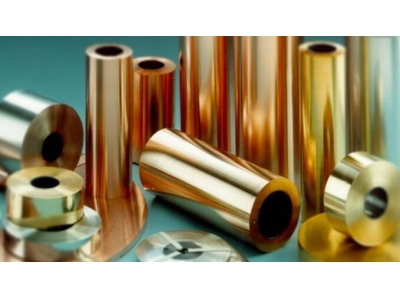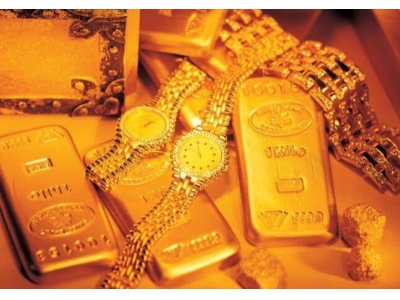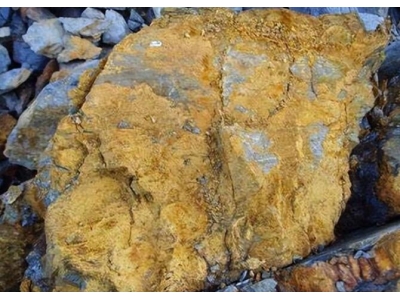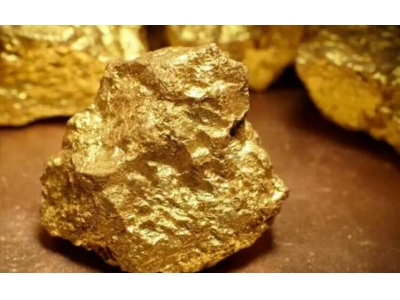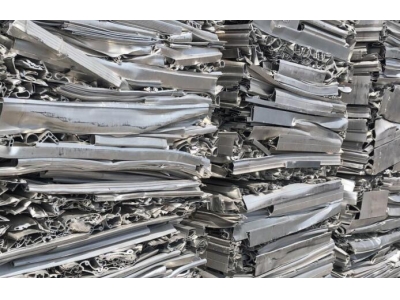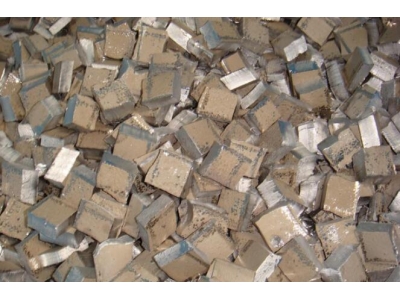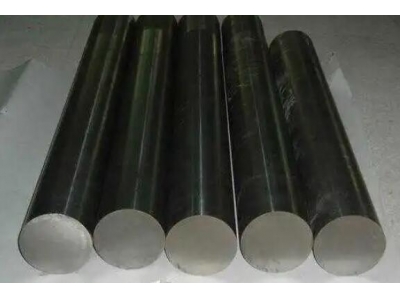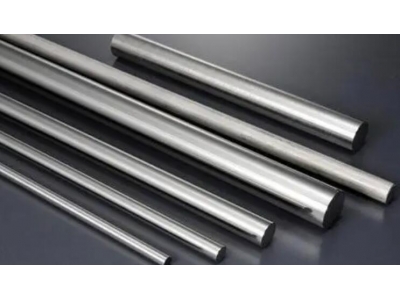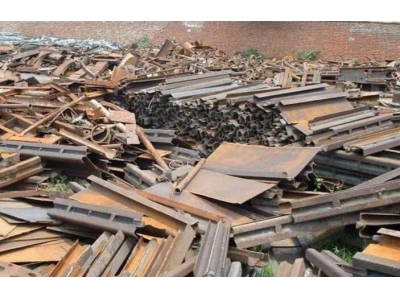出口沙特需要做什么认证?
一、出口沙特需要做什么认证?
大家好,我是认证君。
最近将对中国产品出口沙特需要申请SABER电子清关认证做个系列,其中涉及到几十种产品技术法规,有些产品需要前置认证,而且认证类型又各不相同,比如GMARK, QMARK, IEC, COC等;按照技术法规,每种类型产品有很多要求,我将把一些重点需要注意的章节分享给大家。鉴于法规的严谨性,我会把原文也一起展现在文章里,读者朋友应以原文为准。
玩具产品出口中东地区,需要先申请GMARK证书(玩具GMARK证书在中东7国都可以使用),这个是强制性认证。当你的玩具出口到具体成员国时,还需要清关证书,比如沙特,你的产品需要申请SABER系统的电子清关证书才能进入沙特市场,前提是,你的玩具必须已获得GMARK证书。当你在申请GMARK认证时,要注意很多的地方,比如判断你的产品是否属于玩具,玩具上面的警告语,玩具的特殊要求,玩具产品有哪些禁用物质等等。
今天就和大家分享制造商该如何取得GMARK证书,也就是“制造商合格评定”。
附件四
制造商合格评定程序
1.技术文件:
(a)制造商应建立技术文件,以便能够评估玩具是否符合相关要求,并应包括对风险的充分分析和评估。
(b)技术文件应规定适用的要求,并尽可能涵盖玩具的设计、制造和操作。如果适用,技术文件应至少包含以下内容:
-玩具的一般说明;
-概念设计和制造图纸的详细说明,包括玩具中使用的组件、材料、子组件和电路清单以及所用化学品的安全数 据表;
-理解这些图纸和方案和玩具操作所需的说明和说明;
-制造和储存地点的地址;
- 一个完整或部分适用的海湾标准的清单,以及为满足未应用这些海湾标准的现行海湾技术法规的基本要求而采用的解决方案的描述。如果部分采用海湾标准,技术文件应规定已采用的部件;
-设计计算结果、所进行的检查等。
-合格评定程序和测试报告。
如果制造商提出GC类型检验的申请,则应增加以下内容:
-代表预期生产的样品。如果需要进行测试方案,认证机构可要求提供更多的样本;
-技术设计方案是否性的支持证据。本支持证据应提及已使用的任何文件,特别是未充分适用相关海湾标准的文件。必要时,支持证据应包括由制造商的适当实验室或代表其负责的其他测试实验室进行的测试结果;
-制造商采用的GC型检验证书的说明,以确保生产符合GC MARK证书中规定的类型,制造商发送给认证机构的文件副本,如果制造商已提交玩具GC型检验并使用了类型程序的一致性。
2.第(3)段和第(4)段应适用于完全不符合海湾标准的玩具,如在海湾标准中未完全详细说明的基本要求。
3.制造商应向其选择的单一认证机构提交gc型检查申请。申请应包括:
-制造商的名称和地址,如果申请是由授权代表提出的,则还包括制造商的姓名和名称和地址;
-同一申请未向任何其他认证机构提交的书面声明;
-第1条所述的技术文件。
4.认证机构应:
(a)为玩具:
-检查技术文件和支持证据,以评估玩具技术设计的充分性。
(b)对于样品(s):
-验证样品(s)已按照技术文件制造,并确定按照相关海湾标准的适用规定设计的元素,以及未应用这些标准的相关规定设计的元素;
-进行适当的检查和测试,以检查制造商选择在相关海湾标准中应用解决方案,这些测试是否已正确应用;
-进行适当的检查和测试,或进行进行,以检查在未应用相关海湾标准的解决方案的情况下,制造商采用的解决方案是否符合现行海湾技术法规的相应基本要求;
-就进行检查和测试的地点与制造商达成一致。
(c)认证机构应起草一份评估报告,记录根据(a)和(b)点进行的活动及其结果。在不影响其对通知当局的义务的情况下,认证机构应仅在制造商的同意下,全部或部分公布该报告的内容。
(d)如果该类型符合适用于相关玩具的现行海湾技术法规的要求,认证机构应向制造商颁发gc MARK证书。证书应包含制造商的名称和地址、检查的结论、其有效性的条件(如有)以及识别被批准类型的必要数据。该证书可以附有一个或多个附件。证书及其附件应包含所有相关信息,以允许评估制造的玩具与检查类型的一致性,并允许控制。
那些不符合适用于有关玩具的海湾技术法规的要求的,认证机构应拒绝颁发gc MARK证书,并相应通知申请人,并说明拒绝的详细理由。
(e)认证机构应随时了解标准技术水平的任何变化,表明批准的类型可能不再符合现行海湾技术法规的要求,并应确定这种变化是否需要进一步调查。如果是这样,认证机构应相应地通知制造商。
制造商应通知认证机构持有的技术文件类型考试证书的所有修改批准的类型可能影响产品的一致性的基本要求的海湾技术法规或证书的有效性条件。此类修改需要在原始GC MARK证书的附加形式进行额外批准。
(f)各认证机构应就其已发出或撤回的gc型考试证书和/或任何附加内容通知其通知当局,并应定期或应要求,向其认证机构提供被拒绝、暂停或以其他方式限制的证书清单和/或任何附加内容。
各认证机构应就gc MARK证书和/或其拒绝、撤回、暂停或以其他限制的任何补充内容通知其他认证机构,并应要求通知其颁发的证书和/或补充内容。
GSO、会员国和其他认证机构可根据要求获得一份gc MARK证书和/或附加文件。应要求,GSO和各会员国可获得一份技术文件和被通报机构所进行的检查结果的副本。认证机构应保存一份gc MARK证书的副本、附件和附件,以及包括制造商提交的文件在内的技术文件,直到证书有效期期满。
(g)制造商应保存gc MARK证书、附件和技术文件,在产品上市后10年,供国家当局使用。
5.制造过程一致性:
(a)制造商应采取一切必要措施,使制造过程及其监测确保制造的玩具符合第1点提到的技术文件,符合第4段第(d)点提到的gc MARK证书中描述的批准类型和适用于它们的海湾技术法规的要求。
(b)符合与管理系统相关的相关海湾标准规范的管理系统应假定符合本段第(a)点中规定的要求。
6.合格标志和合格声明:
(a)制造商应在符合现行海湾技术规定要求的每个单独玩具上粘贴符合相关海湾技术规定的海湾合格标志。
(b)制造商应根据第15条(1)和附件六中规定的模型起草玩具模型的书面合格声明(制造商合格声明),并将其保存在技术文件中,供成员国国家主管当局使用10年。合格声明应确定已起草的产品模型。
(c)应根据要求向相关当局提供合格声明的副本。
7.制造商授权代表:
制造商授权代表可提交第3点提到的申请,并履行第4款(e)和(g)点规定的义务以及第6款规定的义务,前提是在授权中规定。
(完)
以下为GSO原文:
ANNEX IV
MANUFACTURER CONFORMITY ASSESSMENT PROCEDURE
1. Technical Documentation:
(a) The manufacturer shall establish the technical documentation wich shall make it possible
to assess the conformity of toys to the relevant requirements, and shall include an adequate
analysis and assessment of the risk(s).
(b) The technical documentation shall specify the applicable requirements and cover, as far
as relevant for the assessment, the design, manufacture and operation of toys. The technical
documentation shall, wherever applicable, contain at least the following elements:
- a general description of toys;
- a detailed description with conceptual design and manufacturing drawings, including a
list of components, materials, sub-assemblies and circuits used in the toy as well as the
safety data sheets on chemicals used, to be obtained from the chemical suppliers;
- descriptions and explanations necessary for the understanding of those drawings and
schemes and the operation of toys;
- the addresses of the places of manufacture and storage;
- a list of the Gulf standards applied in full or in part, and descriptions of the solutions
adopted to meet the essential requirements of the Gulf technical regulations in force
where those Gulf standards have not been applied. In the event of partly applied Gulf
standards, the technical documentation shall specify the parts which have been applied;
- results of design calculations made, examinations carried out, etc.;
- a description of the conformity assessment procedure followed and test reports.
The following shall be added, if the manufacturer lodges an application for a GC-type
examination:
- the specimens representative of the production envisaged. The notified body may
request further specimens if needed for carrying out the test programme;
- the supporting evidence for the adequacy of the technical design solution. This
supporting evidence shall mention any documents that have been used, in particular
where the relevant Gulf standards have not been applied in full. The supporting
evidence shall include, where necessary, the results of tests carried out by the
appropriate laboratory of the manufacturer, or by another testing laboratory on his behalf
and under his responsibility;
- a copy of the GC-type examination certificate and a description of the solutions adopted
by the manufacturer to ensure the conformity of the production with the type specified in
the GC-type examination certificate, copies of documents sent by the manufacturer to
the Notified Body, if the manufacturer has submitted the toy to GC-type examination and
has used the conformity to type procedure.
2. Paragraphs (3) and (4) shall apply to toys non-conforming entirely to the Gulf standards, as
is the case with the essential requirements not fully detailed in the Gulf standards.
3. The manufacturer shall lodge an application for GC-type examination with a single notified
body of his choice. The application shall include:
- the name and address of the manufacturer and, if the application is lodged by the
authorized representative, his name and address as well;
- a written declaration that the same application has not been lodged with any other
notified body;
- the Technical documentation set out in paragraph 1.
4. The notified body shall:
(a) For Toys:
- examine the technical documentation and supporting evidence to assess the adequacy
of the technical design of toys.
(b) For the specimen(s):
- verify that the specimen(s) have been manufactured in conformity with the technical
documentation, and identify the elements which have been designed in accordance with
the applicable provisions of the relevant Gulf standards, as well as the elements which
have been designed without applying the relevant provisions of those standards;
- carry out appropriate examinations and tests, or have them carried out, to check
whether, where the manufacturer has chosen to apply the solutions in the relevant Gulf
standards, these have been applied correctly;
- carry out appropriate examinations and tests, or have them carried out, to check
whether, where the solutions in the relevant Gulf standards have not been applied, the
solutions adopted by the manufacturer meet the corresponding essential requirements
of the Gulf technical regulations in force;
- agree with the manufacturer on a location where the examinations and tests will be
carried out.
(c) The notified body shall draw up an evaluation report that records the activities undertaken
in accordance with points (a) and (b) and their outcomes. Without prejudice to its obligations
vis-à vis the notifying authorities, the notified body shall release the content of that report, in
full or in part, only with the agreement of the manufacturer.
(d) Where the type meets the requirements of the Gulf technical regulations in force that apply
to the concerned toys, the notified body shall issue a GC-type examination certificate to the
manufacturer. The certificate shall contain the name and address of the manufacturer, the
conclusions of the examination, the conditions (if any) for its validity and the necessary data
for identification of the approved type. The certificate may have one or more annexes
attached. The certificate and its annexes shall contain all relevant information to allow the
conformity of manufactured toys with the examined type to be evaluated and to allow for in
service control.
Where the type does not satisfy the requirements of the Gulf technical regulations in force
that apply to the concerned toys, the notified body shall refuse to issue a GC-type
examination certificate and shall inform the applicant accordingly, giving detailed reasons
for its refusal.
(e) The notified body shall keep itself apprised of any changes in the generally
acknowledged state of the art which indicate that the approved type may no longer comply
with the requirements of the Gulf technical regulations in force, and shall determine whether
such changes require further investigation. If so, the notified body shall inform the
manufacturer accordingly.
The manufacturer shall inform the notified body that holds the technical documentation
relating to the GC-type examination certificate of all modifications to the approved type that
may affect the conformity of the product with the essential requirements of the Gulf
technical regulations in force or the conditions for validity of the certificate. Such
modifications shall require additional approval in the form of an addition to the original GC
type examination certificate.
(f) Each notified body shall inform its notifying authorities concerning the GC-type
examination certificates and/or any additions thereto which it has issued or withdrawn, and
shall, periodically or upon request, make available to its notifying authorities the list of
certificates and/or any additions thereto refused, suspended or otherwise restricted.
Each notified body shall inform the other notified bodies concerning the GC-type
examination certificates and/or any additions thereto which it has refused, withdrawn,
suspended or otherwise restricted, and, upon request, concerning the certificates and/or
additions thereto which it has issued.
The Organization, the Member States and the other notified bodies may, on request, obtain
a copy of the GC-type examination certificates and/or additions thereto. On request, the
Organization and the Member States may obtain a copy of the technical documentation and
the results of the examinations carried out by the notified body. The notified body shall keep
a copy of the GC-type examination certificate, its annexes and additions, as well as the
technical file including the documentation submitted by the manufacturer, until the expiry of
the validity of the certificate.
(g) The manufacturer shall keep a copy of the GC-type examination certificate, its annexes
and additions together with the technical documentation at the disposal of the national
authorities for 10 years after the product has been placed on the market.
5. Manufacturing:
(a) The manufacturer shall take all measures necessary so that the manufacturing process
and its monitoring ensure conformity of the manufactured toys with the technical documents
mentioned in point 1, with the approved type described in the GC-type examination
certificate mentioned in point (d) of paragraph 4 and with the requirements of the Gulf
technical regulations that apply to them.
(b) The management systems which are in conformity with the relevant Gulf standard
specifications related to management systems shall presume conformity with the
requirements set out in point (a) of this paragraph.
6. Conformity marking and declaration of conformity:
(a) The manufacturer shall affix the Gulf conformity marking in accordance with the relevant
Gulf technical regulations to each individual toy that is in conformity with the requirements
of the gulf technical regulations in force.
(b) The manufacturer shall draw up a written declaration of conformity for a toy model
(Manufacturer Conformity Declaration) in accordance with article 15(1) and the model sets
out in Annex VI, and shall keep it among the technical documentation at the disposal of the
national competent authorities in the member states for 10 years after the product has been
placed on the market. The declaration of conformity shall identify the product model for
which it has been drawn up.
(c) A copy of the declaration of conformity shall be made available to the relevant
authorities upon request.
7. The manufacturer's authorized representative:
The manufacturer's authorized representative may lodge the application referred to in point 3 and
fulfill the obligations set out in points (e) and (g) of paragraph 4 and the obligations set out in
paragraph 6 on behalf the manufacturer, provided that they are specified in the mandate.
以上就是GMARK认证的合格评定程序。涉及到制造商的产品技术文件,样品测试,资料文件等,建议找专业服务代理机构办理会更加省心省力。
码字不易欢迎点赞!
我是认证君,一个在认证行业呆了22年的家伙
二、出口沙特外贸怎么处理?
出口沙特外贸需要谨慎处理。原因是沙特是一个具有特殊文化和宗教背景的国家,对外贸的要求和规定可能与其他国家有所不同。在处理出口沙特外贸时,需要考虑以下几个方面:1.了解沙特的文化和宗教习俗:沙特是一个伊斯兰教国家,对于一些商品和服务可能有特殊的限制和要求。了解沙特的文化和宗教习俗,可以避免因为不了解而导致的文化冲突或违反当地规定的情况。2.遵守沙特的法律和法规:在进行外贸活动时,需要遵守沙特的相关法律和法规。这包括贸易政策、海关规定、商业合同等方面的规定。了解并遵守当地的法律和法规,可以避免因为违规而导致的法律纠纷或经济损失。3.建立良好的商业关系:在处理出口沙特外贸时,建立良好的商业关系是非常重要的。这包括与当地的商业伙伴建立信任和合作关系,了解他们的需求和偏好,并提供符合当地市场需求的产品和服务。除了以上几点,还需要考虑物流和支付方式等方面的问题。沙特地处中东地区,物流和运输可能存在一些特殊的挑战,需要选择合适的物流合作伙伴,并制定有效的物流方案。此外,支付方式也需要根据当地的习惯和规定进行选择,以确保交易的安全和顺利进行。总之,出口沙特外贸需要谨慎处理,需要了解当地的文化、法律和商业环境,并建立良好的商业关系,同时还需要考虑物流和支付方式等方面的问题。只有全面考虑并妥善处理这些因素,才能在沙特外贸市场取得成功。
三、沙特铁矿能出口么?
沙特是出口铁矿石的国家之一。其铁矿石储量丰富,品质较高,主要集中在红海沿岸和内陆地区。由于沙特的铁矿石储量和品位均较高,且开采成本较低,因此其铁矿石具有一定的出口潜力。以上内容仅供参考,建议查阅关于沙特铁矿的资料获取更全面的信息。
四、中国在沙特石油出口比例?
沙特进口原油占到中国总进口量的15.7%。
五、沙特石油出口国排名?
第一名:沙特
沙特虽然已经不再是全球最大的产油国,但仍然是全球最大的石油出口国,因为其生产的石油大部分都用于出口。目前沙特每天的石油出口量大概在730万桶左右,排名世界第一。
第二名:俄罗斯
俄罗斯目前无论在石油产量还是在石油出口上,都是排在世界第二,我国也是俄罗斯的主要石油出口国,目前其石油出口量为500万桶/日左右,仅次于沙特。
第三名:伊拉克
伊拉克是中东地区第二大产油国和出口国,其石油出口量在400万桶/日左右,全球排名第三。
第四名:加拿大
加拿大的原油产量可排到全球第五,但加拿大由于人口不多,石油消耗并不是很大,因此有大量的剩余石油可供出口,其每天的石油出口量在310万桶左右,不过绝大多数都是出口到了美国。
第五名:阿联酋
同样是中东的产油大国,在伊朗的石油出口被限制后,阿联酋的石油出口量便成了全球第五,其每天的石油出口量的220万桶左右。
六、沙特石油出口到哪些国家?
沙特的石油基来上都出口到美国,中国和日本,韩国也有一部分。出口最多的是美国,其次是中国,日本和韩国等国家。沙特产的石油在国际市场上有着重要的地位。作为欧佩克成员国,一旦停产,会对国际油价产生严重影响,小则油价飘升,影响各国能源成本。大则影响全球稳定。
七、沙特石油出口占世界比例?
占全球石油出口的13.3%。
据“世界顶级出口国”网站统计显示,2019年,沙特石油出口收入达1336亿美元,位列全球十大石油出口国第一,占全球石油出口总额的13.3%;俄罗斯和伊拉克以1214亿美元和833亿美元分列第二、三位,占全球石油出口份额分别为12.1%和8.3%;随后是加拿大(681亿美元,6.8%)!
八、美国与沙特的原油出口博弈
美国和沙特阿拉伯是世界上两大原油生产国和出口国。近期,两国在原油出口政策上出现分歧,引发了一场原油出口限制的博弈。这场博弈不仅影响着全球原油供给格局,也反映了两国在能源领域的利益角力。让我们一起来探讨这场原油出口博弈的来龙去脉。
美国出台原油出口限制政策
2015年,在经历了40多年的原油出口禁令后,美国最终放开了原油出口限制。这一政策调整使得美国原油得以大量出口,并在一定程度上缓解了全球原油供给紧张的局面。
然而,随着美国页岩油产量的快速增长,美国国内原油供给日益充足,国内油价也随之下降。为了维护本国石油工业的利益,美国政府近期再次出台了一系列限制原油出口的政策。这些政策包括:
- 对部分原油出口实施许可证制度,限制出口数量
- 对出口原油征收出口税,提高出口成本
- 优先保障国内原油供给,限制出口
这些政策无疑给全球原油供给格局带来了新的变数,也引发了沙特阿拉伯的不满。
沙特阿拉伯的反应
沙特阿拉伯是世界上最大的原油出口国,其原油出口量占全球总出口量的近15%。沙特一直以来都是美国在中东地区的重要盟友,两国在能源领域也有着密切的合作关系。
然而,美国最新出台的原油出口限制政策,无疑会对沙特的原油出口造成一定程度的冲击。沙特方面表示,这种单边主义做法违背了自由贸易的原则,将会扰乱全球能源市场的稳定。
为了应对美国的政策,沙特正在采取一些措施,包括:
- 寻求与其他产油国如俄罗斯等加强合作,共同维护产油国的利益
- 加大对亚洲市场特别是中国市场的原油出口力度
- 加快推进能源多元化战略,减少对原油出口的依赖
博弈的影响与展望
这场美国与沙特之间的原油出口博弈,不仅影响着两国的能源利益,也将对全球能源格局产生深远的影响。
一方面,美国出台的限制政策将会加剧全球原油供给的不确定性,可能导致国际油价的波动。这将给全球
九、出口沙特轮胎跟国内啥区别?
出口轮胎也因为国内与国外的工艺标准,质量管控和化学安全方面还有差距,所以,在质量等硬性标准上会比国内的内销轮胎好上一些, 内销轮胎则因为本土市场,更为了解消费群体的需求,而最近,李克强总理在视察质检工作时提出要求,质检部门要促进企业出口、内销产品在同一生产线、按相同的标准生产,使内外销产品达到同样的质量水准,这一“三同政策”相信会在不久的将来提升国产内销轮胎的质量。
十、沙特最大的石油出口国?
根据国际能源署和欧佩克组织日前发布的数据,沙特2020年共出口约24亿桶原油,日均出口量约为660万桶。去年,沙特是全球最大的原油出口国,其次是俄罗斯、伊拉克、美国和加拿大。

